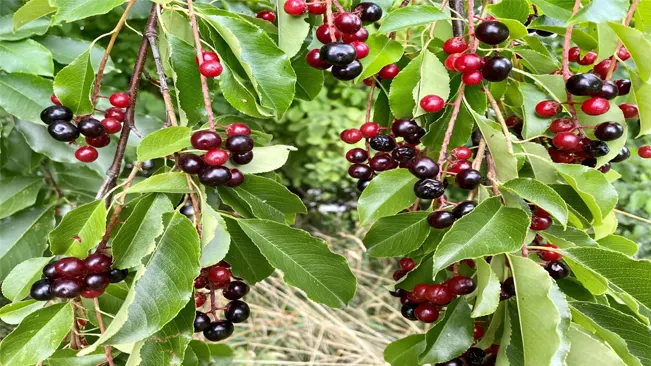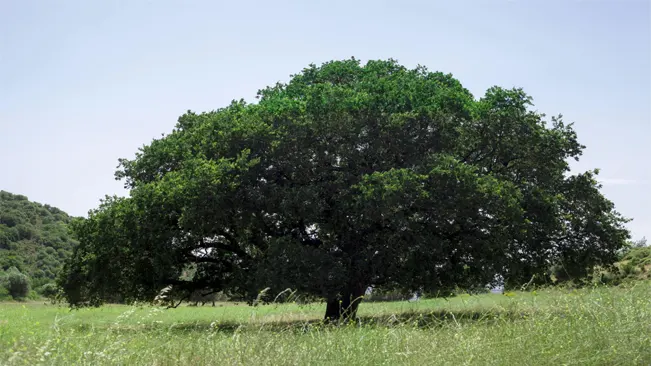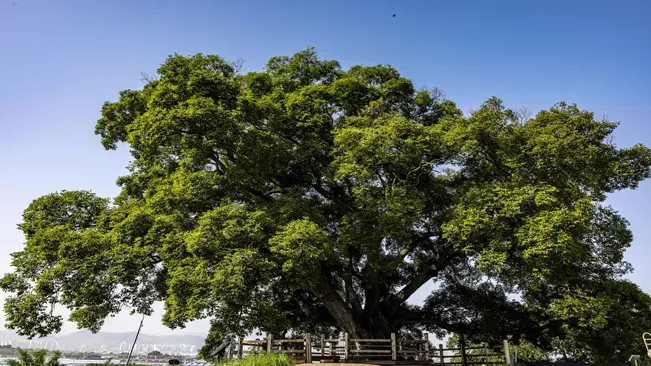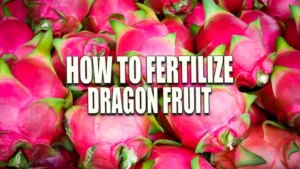How to Grow a Hackberry Tree: From Site Selection to Care and Maintenance
- March 5, 2024
- 0 comment
The Hackberry tree (Celtis occidentalis), a hardy and adaptable tree, is a popular choice among gardeners for its resilience and ornamental appeal. Native to North America, the Hackberry is known for its ability to thrive in various soil types and environmental conditions. This article aims to guide you through the process of growing a Hackberry tree, from selecting a planting site to caring for a mature tree.

Benefits of Hackberry Tree
| Environmental Tolerance | Thrives in a variety of soil types and conditions, including urban environments and droughts. |
| Wildlife Habitat | Provides shelter and food for birds, small mammals, and insects through its berries and foliage. |
| Ornamental Value | Offers aesthetic appeal with its bark texture, leaf shape, and fall color. |
| Low Maintenance | Requires minimal care once established, making it suitable for busy or novice gardeners. |
| Shade and Cooling | Provides ample shade, which can help reduce cooling costs in nearby buildings. |
| Air Quality Improvement | Acts as a natural air purifier by absorbing pollutants and producing oxygen. |
| Windbreak and Erosion Control | Can be used as a windbreak; its root system helps in controlling soil erosion. |
| Carbon Sequestration | Helps in mitigating climate change by absorbing carbon dioxide from the atmosphere. |
| Edible Fruits | Produces small, edible berries that can be used in jellies and other recipes. |
| Biodiversity Support | Contributes to ecosystem diversity by supporting various plant and animal species. |
Selecting a Planting Site
Soil and Sunlight Requirements

Soil Adaptability
- Versatility: Hackberry trees are highly adaptable and can thrive in various soil types. This adaptability makes them suitable for different landscapes and environments.
- Soil Types: They grow well in clay, loam, and sandy soils. This range encompasses most typical garden soil compositions.
- Drainage: While they prefer well-drained soil, Hackberry trees can also handle less ideal conditions, including occasional flooding. This tolerance is particularly useful in areas prone to heavy rains or in low-lying spots where water tends to accumulate.
Sunlight Exposure
- Sunlight Preference: Full to partial sunlight is ideal for Hackberry trees. Full sunlight means at least 6 hours of direct sun per day, while partial sunlight refers to about 3-6 hours.
- Growth Impact: Adequate sunlight is essential for optimal growth and health. Trees receiving less sunlight may not grow as vigorously and could be more prone to pest issues and diseases.
Space Considerations
Mature Size
- Height and Spread: A mature Hackberry tree can reach heights of 40 to 60 feet, with a canopy spread just as wide. Understanding this mature size is crucial for selecting an appropriate planting site.
- Growth Pattern: They tend to have a rounded to spreading canopy, which should be considered when thinking about space.
Location Precautions
- Distance from Structures: Due to their size at maturity, it’s important to plant Hackberry trees well away from buildings, power lines, and other structures. This precaution prevents potential damage from falling limbs or roots growing too close to foundations.
- Root System Consideration: The root system of a Hackberry tree is extensive and can interfere with underground utilities or pavement if planted too close.
Planting Your Hackberry Tree
Best Time to Plant
Planting a Hackberry tree during the early spring or fall is ideal for several reasons:

- Temperature and Moisture: These seasons typically have milder temperatures and more consistent moisture levels. This environment is less stressful for young trees and helps them establish roots more effectively.
- Root Development: Planting in these seasons allows the tree to focus on root growth before the extremes of summer heat or winter cold set in. In spring, the warming soil encourages root growth, and in fall, the tree can establish roots before it goes dormant for winter.
- Reduced Stress: Planting outside of the harsh summer heat reduces the risk of sun scorch and drought stress. Similarly, avoiding the winter cold prevents frost damage to new plantings.
Planting Process
The planting process for a Hackberry tree is crucial for its future growth and health:
- Hole Preparation:
- The hole should be dug to twice the width of the root ball. This extra space allows the roots to spread easily and establish themselves in the surrounding soil.
- The depth of the hole should match the depth of the root ball to prevent planting the tree too deep, which can cause stem or root issues.
- Removing the Tree from its Container:
- Carefully remove the tree to avoid disturbing the roots. If the tree is balled and burlapped, place it in the hole with the burlap and then gently remove or cut away the burlap.
- If the roots are circling the container, gently tease them outward to encourage them to grow into the surrounding soil.
- Positioning the Tree:
- Place the tree in the center of the hole, ensuring it’s standing straight.
- The top of the root ball should be level with the surrounding ground to ensure proper watering and root growth.
- Backfilling:
- Fill the hole with the removed soil, tamping it down gently as you go to remove air pockets, which can dry out roots.
- Avoid overly compacting the soil, as this can make it difficult for roots to penetrate and for water to infiltrate.
- Watering After Planting:
- Water the tree thoroughly immediately after planting to settle the soil and eliminate air pockets.
- This initial watering also provides essential moisture to the roots, helping the tree to recover from the transplanting process.
Watering and Mulching
Watering
- Initial Watering: In the early stages after planting, it’s crucial to establish a good root system for your Hackberry tree. Watering deeply once a week is recommended. This means providing enough water to soak the soil around the roots thoroughly. The goal is to encourage the roots to grow deep into the soil, which promotes better stability and drought resistance in the long run.
- Established Trees: Hackberry trees are known for their drought tolerance. Once established, which typically takes about one to two years, they require significantly less water. However, during prolonged dry spells or extreme heat, supplemental watering may be necessary. It’s important to monitor soil moisture levels. The soil should be moist but not waterlogged.
- Monitoring Soil Moisture: To check soil moisture, use a soil probe or simply dig a small hole near the tree (avoiding root damage) to feel the soil. If the top few inches of soil are dry, it’s time to water.
- Watering Technique: When you water, do so at the tree’s drip line (the area directly below the outer circumference of the tree branches) rather than right at the trunk. This encourages the roots to spread outward for stability and nutrient absorption.
Mulching
- Purpose of Mulching: Mulching serves several purposes for Hackberry trees. It helps retain soil moisture, preventing the soil from drying out quickly under the sun. Mulch also regulates soil temperature, keeping it cooler in summer and warmer in winter. Additionally, it suppresses weed growth, which competes with the tree for nutrients and water.
- Proper Mulching: Apply a 2-3 inch layer of organic mulch, such as wood chips, bark, or compost, around the base of the tree. It’s important to avoid piling the mulch directly against the trunk, as this can lead to moisture retention against the bark and potentially cause rot or disease. Instead, leave a small gap around the trunk.
- Renewing Mulch: Over time, mulch will break down and integrate with the soil, contributing to its fertility. It’s a good practice to check the mulch layer annually and add more as needed to maintain the 2-3 inch depth. This is also an excellent opportunity to check the general health of the tree and address any issues such as pests or diseases.
- Choosing Mulch: Organic mulches are preferable as they break down and enrich the soil. Avoid using inorganic materials like stones or rubber, which don’t provide the same benefits and can even heat up too much, harming the roots.
Fertilizing and Pruning
Fertilizing Hackberry Trees
Hackberry trees are known for their hardiness and ability to thrive in various soil conditions, which often reduces the need for regular fertilization. Here are some key points to consider:
- Soil Assessment: Before deciding to fertilize, it’s advisable to conduct a soil test. This will determine if your soil lacks specific nutrients that are essential for the tree’s growth.
- Fertilizer Type: If fertilization is necessary, use a balanced, slow-release fertilizer. A balanced fertilizer typically has equal proportions of nitrogen, phosphorus, and potassium (N-P-K), often represented as 10-10-10 or 20-20-20.
- Application Time: The best time to fertilize is in early spring, just before new growth begins. This timing allows the tree to utilize the nutrients effectively during its active growth period.
- Application Method: Apply the fertilizer around the drip line of the tree, which is the area directly below the outer circumference of the tree’s canopy. Avoid placing fertilizer too close to the trunk to prevent root burn.
- Moderation is Key: Over-fertilizing can be harmful. It’s important to follow the recommended amounts on the fertilizer package or consult with a local arborist.
Pruning Hackberry Trees
Pruning is essential for maintaining the health and structure of a Hackberry tree. Here are some tips and best practices:

- Best Time to Prune: The ideal time for pruning is during the dormant season, typically late fall to winter. This timing prevents sap loss in the tree and reduces the risk of disease and pest infestation.
- Removing Unwanted Branches: Focus on removing dead, damaged, or diseased branches. This not only improves the tree’s appearance but also prevents the spread of decay, diseases, and pests.
- Shaping the Tree: Pruning can also help shape the tree and control its size. However, Hackberry trees generally have a good natural shape, so minimal pruning is needed for aesthetic purposes.
- Proper Technique: Use clean, sharp pruning tools. Make cuts at a 45-degree angle, about 1/4 inch above a bud or branch to encourage new growth.
- Safety First: For larger trees or higher branches, it might be safer to hire a professional arborist, especially when dealing with branches that are close to power lines or buildings.
Pest and Disease Management
Hackberry trees are relatively resistant to pests and diseases. However, they can be susceptible to certain issues such as powdery mildew, aphids, and Hackberry nipple gall. Regularly inspect your tree and consult with a local arborist or extension service for appropriate treatment options.
Powdery Mildew
- Description: Powdery mildew is a fungal disease that appears as a white or gray powdery growth on the leaves and stems.
- Impact: While it rarely kills the tree, it can weaken it by inhibiting photosynthesis and causing leaves to prematurely drop.
- Management: Improve air circulation around the tree and avoid overhead watering. Fungicides can be used, but are often unnecessary as the disease is more unsightly than harmful.
Aphids
- Description: Aphids are small, sap-sucking insects that can be green, yellow, brown, red, or black. They often cluster on the undersides of leaves or on new growth.
- Impact: Heavy infestations can cause leaf curling and stunted growth. Aphids also secrete a sticky substance called honeydew, which can lead to sooty mold growth.
- Management: Natural predators like ladybugs can control aphids. In severe cases, insecticidal soap or neem oil can be used.
Hackberry Nipple Gall
- Description: This is caused by a small insect (Psyllid) that lays eggs on the leaves. The tree reacts by forming small, nipple-like galls.
- Impact: These galls are generally harmless and more of an aesthetic issue. They don’t significantly affect the health of the tree.
- Management: No treatment is generally necessary. If the appearance is a concern, you can prune out heavily infested branches.
General Care Tips for Pest and Disease Management
- Regular Inspection: Regularly check your tree for signs of pests or diseases. Early detection is key to effective management.
- Cultural Practices: Good cultural practices, such as proper watering, mulching, and pruning, can prevent many problems.
- Avoid Over-fertilization: Excess nitrogen can encourage aphid infestations. Use fertilizers judiciously.
- Encourage Beneficial Insects: Promote a healthy ecosystem in your garden that includes insects that prey on common pests.
- Consult Professionals: If you’re unsure about a problem or how to treat it, consult with a local arborist or an extension service.
Conclusion
Growing a Hackberry tree is a rewarding endeavor for any gardener. With its tolerance for various conditions and minimal care requirements, it’s an excellent choice for both novice and experienced gardeners. By following these guidelines, you can enjoy the beauty and benefits of a Hackberry tree in your landscape for years to come.
FAQs (Frequently Asked Questions)
- What is the best time to plant a Hackberry tree?
Plant Hackberry trees in early spring or fall, when the weather is cooler and there is more moisture in the soil. - How much sun does a Hackberry tree need?
Hackberry trees thrive in full to partial sunlight. A minimum of 4-6 hours of direct sunlight per day is ideal. - What type of soil is suitable for Hackberry trees?
They are adaptable to a wide range of soils but prefer well-drained soil. They can grow in clay, loam, or sandy soils. - How often should I water a newly planted Hackberry tree?
Water it deeply once a week for the first few months. Once established, Hackberry trees are drought-tolerant and require less frequent watering. - Do Hackberry trees require a lot of maintenance?
No, they are low-maintenance trees. Occasional pruning to remove dead or damaged branches and annual mulching are usually sufficient. - How fast do Hackberry trees grow?
They have a moderate growth rate, typically growing 1 to 2 feet per year. - When and how should I prune a Hackberry tree?
Prune during the dormant season (late fall or winter) to remove dead or diseased branches, and to shape the tree. - Are Hackberry trees susceptible to any pests or diseases?
They can face issues like powdery mildew, aphids, and Hackberry nipple gall, but they are generally resistant to major pests and diseases. - How large do Hackberry trees get?
They can reach heights of 40 to 60 feet with a similar spread, so they need plenty of space to grow. - Can I eat the berries from a Hackberry tree?
Yes, the small berries are edible and can be used in jellies and other recipes, although they are not widely eaten due to their small size and hard seed.

Kristine Moore
Forestry AuthorI'm Kristine Moore, a seasoned garden landscaping professional with over 30 years of experience. My extensive career has been dedicated to transforming outdoor spaces into stunning, sustainable landscapes. With a deep understanding of horticulture, design principles, and environmental stewardship, I have become a respected figure in the field, known for creating harmonious, visually appealing, and eco-friendly gardens. My commitment to excellence and continuous learning in landscaping trends and techniques has solidified my reputation as an expert in garden design and implementation.













Leave your comment